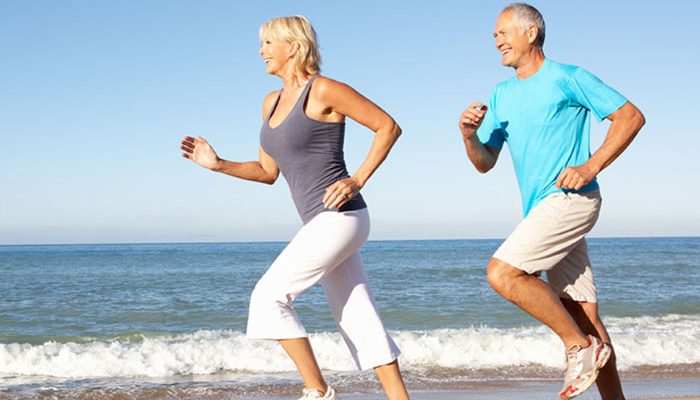After the young age of 30, we start losing bone density. Women will lose up to 20 percent of their bone mineral density in the five to seven years that follow menopause. By age 65, both men and women lose bone density at the same rate. Unfortunately, many factors that we cannot change, such as our age, genetic code, and sex, put us at risk for osteoporosis. Further, the loss of bone mineral density will mean that many people suffer from life-changing fractures and injuries. When osteoporosis has made your bones week, your chances of broken bones and fractures, even spine fractures, are much greater. Spine fractures can cause severe back pain that makes it difficult to stand, walk, sit or even lift simple objects. Fortunately, everyday lifestyle choices can help you prevent this disease.
Think Calcium + Vitamin D
If you do not consume enough calcium in your diet, your body will naturally start to break down your bones to get the nutrients that it needs. The result means that you lose bone mass. Therefore, and to prevent this scenario, it is important to make sure that you consume foods rich in Calcium. These foods include dairy products, calcium-fortified juices, cereal, tofu, and soy milk, as well as sardines, salmon, and dark green leafy vegetables. As for Vitamin D, it is important to note that not many foods are rich sources. You can get Vitamin D by consuming egg yolks, beef liver, cheese, fatty fish such as tuna, mackerel and salmon, and by consuming Vitamin D fortified foods such as milk, cereal, and orange juice. While your skin also naturally makes Vitamin D when exposed to sunlight, your primary source of Vitamin D should mostly come from your diet, as excessive sunlight exposure can lead to skin cancer.
Think Weight-Bearing Exercises
Most people know that working out can make muscles stronger, but the same is also true for your bones! The very best types of workouts for your bones are those that are weight-bearing. Weight-bearing exercises prompt the body to make new bone. These types of exercises include racket sports such as tennis, running, jogging, walking, water aerobics, regular aerobics, dancing, tai chi, climbing stairs, practicing yoga, weight training with machines or free weights, training with elastic resistance bands, or doing exercises that make you use your own body weight, such as pushups and squats. Everyday tasks such as lifting bags of groceries and lifting children, are also good for your bones, so long as you lift properly and without straining your spine.
Other Prevention Techniques
If you’ve been having more than two alcoholic beverages per day, this habit could lead to bone loss. To maintain strong bones, you will want to make changes and consume less alcohol. Also, if you are a smoker, it is essential for your bone health that you take the necessary steps to quit smoking. Smoking doubles your chance of bone loss and fractures. Carbonated soft drinks such as colas also have been found to lead to bone loss. It is better to replace these with water and calcium-rich drinks such as milk or calcium-fortified juices. Finally, restrictive diets and eating disorders can also contribute to osteoporosis, so maintaining a healthy diet with an adequate intake of nutrients is extremely important for maintaining bone health.
If you are concerned about bone loss or think that you may be at an increased risk for Osteoporosis, our Spine Specialists here at the Stridewell Same-Day Spine Clinic can help. We get to know our patients on a very personal level. We will spend the necessary amount of time with you to address your questions and concerns, and we will make all necessary recommendations that will enable you to live a healthier life. Stridewell Tips
read article


